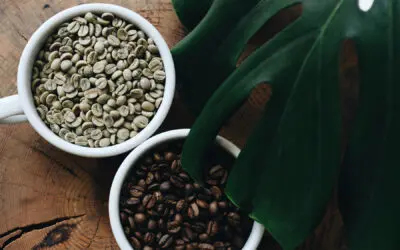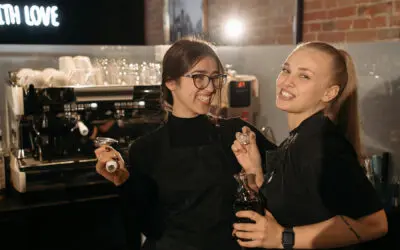We tell ourselves stories about coffee to justify the expense. The $300 bags of Geisha from Hacienda La Esmeralda, the hand-blown glass brewers, the scales that measure to a tenth of a gram.
These are the tokens of our particular madness, the physical manifestations of our belief that some coffees demand more from us than others. Perhaps they do.
In Canada, where I first encountered Geisha coffee (weird, I know), it was already too late. The friend serving it a a dinner party spoke of bergamot and jasmine, of high elevation and selective harvesting, but what I remember most was the price: $16 for a single cup. This was in 2018. Now the same coffee would cost twice that. We accept these things as normal. We have learned to nod when someone tells us their coffee costs more per gram than silver.
Here is what I know about brewing Geisha coffee:
1. A pour-over is the most appropriate extraction method. Control is everything and in a world of performative measures, the pour-over is the most intimate investment in the end result – be it triumphant, or best left out of the final report.
2. The water must be soft but not too soft. Total dissolved solids between 100 and 150 parts per million. The people who care about such things will tell you this matters more than anything else. They have spreadsheets to prove it. In Iceland, where the water runs pure over volcanic rock, they add minerals back to it. This is the kind of detail that separates the people who brew coffee from the people who pursue coffee as a form of self-definition. If you are the former, you are probably on a journey to become the latter.
3. Temperature becomes both science and superstition. The orthodox view holds that 96 degrees Celsius is optimal. But I have watched award-winning baristas in Tokyo brew Geisha at 92 degrees, insisting that the lower temperature better preserves the florals, the delicate notes of stone fruit and honey that justify the cost. Who am I to say they are wrong? In matters of faith, evidence is beside the point.
4. The ratio of coffee to water is not negotiable. Twenty-two grams of coffee to 360 grams of water. This is the way it is done in Panama, where the best Geisha is grown, and in Norway, where the best Geisha is often roasted, and in Singapore, where the most expensive Geisha is sold. The people who set these standards speak with the quiet certainty of those who have eliminated all doubt from their lives.
5. Grind size becomes a meditation. Slightly finer than what you would use for other coffees, but not so fine that you risk bitter extraction. The grinder must be perfectly aligned, the burrs clean and sharp. These are the details that seem excessive until suddenly they don’t. Until you understand that at these prices, every gram that isn’t perfectly extracted is a kind of failure.
6. The actual brewing is either very simple or impossibly complex, depending on your relationship with anxiety. Thirty grams of water for the bloom, thirty seconds of waiting. Watch the coffee swell and release carbon dioxide. This is called the degassing phase. This is called knowing things that don’t matter to normal people.
Then the main pour, in concentric circles, maintaining the water level, never letting the coffee bed run dry. Three minutes and thirty seconds total brew time. These are the specifications that have emerged from thousands of experiments, from competitions and laboratories and the quiet obsession of people who have decided that coffee is the thing that gives their lives meaning.
Some facts about Geisha coffee that may or may not be relevant:
The variety was discovered in Ethiopia in the 1930s but became famous in Panama in the 2000s. The first auction lot of Hacienda La Esmeralda Geisha famously sold for $21 per pound in 2004. By 2019, the price had reached $1,029 per pound. As in similar discussions about Art being nothing more that a store of value, these numbers simultaneously mean nothing and everything.
The flavour profile is described as floral, tea-like, intensely aromatic. Critics speak of jasmine, bergamot, peach, honey. The same descriptors appear again and again, as if everyone has agreed to use the same vocabulary to justify the same prices. Perhaps they have. Perhaps this is how consensus is built in a world where coffee can cost more than wine.
In the end, brewing Geisha coffee becomes a form of performance art. We measure and time and pour with theatrical precision, not because it matters (though it does) but because we need to believe it matters. Because we have paid too much and invested too much of ourselves in the idea that coffee can be more than coffee.
The result, when everything is done correctly, is either transcendent or merely very good coffee, depending on your capacity for self-deception. I have experienced both outcomes. I have believed both outcomes. In this, as in so many things, the truth is less important than what we need the truth to be.



0 Comments